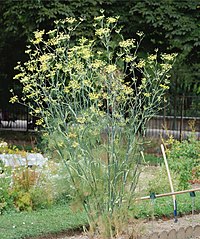
Photo from wikipedia
Premise of research. A diverse fruit and seed assemblage has been discovered in tuffaceous sandstone molds and casts from a classic paleobotanical locality of probable late Eocene age in Trinity County,… Click to show full abstract
Premise of research. A diverse fruit and seed assemblage has been discovered in tuffaceous sandstone molds and casts from a classic paleobotanical locality of probable late Eocene age in Trinity County, East Texas. Application of microcomputed tomography (μ-CT) X-ray scan technology has revealed a previously hidden carpological diversity and extensive evidence of feeding damage by animals. Methodology. Natural molds and casts in sandstone were analyzed through standard light microscopy and μ-CT X-ray scans, which were processed in Avizo, VGStudio, and Meshlab to construct 3-D surfaces or volumes of the molds. These visualizations were compared with equivalent renderings for fruits and seeds of similar modern taxa. Pivotal results. Seven new generic occurrences, including Meliosma (Sabiaceae), Yua (Vitaceae), Engelhardia (Juglandaceae), Turpinia (Staphyleaceae), Nyssa, Mastixia (Nyssaceae), and Symplocos (Symplocaceae), and 15 species, plus several unidentified species, are recognized. Prior identifications to Myristica and Phoenicites are rejected, an emended diagnosis is provided for Nyssa texana, and original material is reillustrated. A new northern extent for the distribution of the mainly Neotropical clade Symplocos sect. Symplocos is established. The flora includes several thermophilic elements and some that are now confined to Asia and/or Malesia. Fruit and seed predation, evident in the overwhelming majority of specimens and taxonomically indiscriminate, serve as a rare and unique snapshot of plant-animal interactions. Conclusions. Although previously suggested to derive from the Catahoula Formation, current mapping suggests that this flora was collected from the Whitsett Formation and is likely of late Eocene age. The flora shows very little overlap with the nearby early Oligocene Huntsville flora. Further study will be necessary to identify the sources of feeding damage, and more samples will need to be collected in order to specifically identify the remaining unnamed material.
Journal Title: International Journal of Plant Sciences
Year Published: 2019
Link to full text (if available)
Share on Social Media: Sign Up to like & get
recommendations!